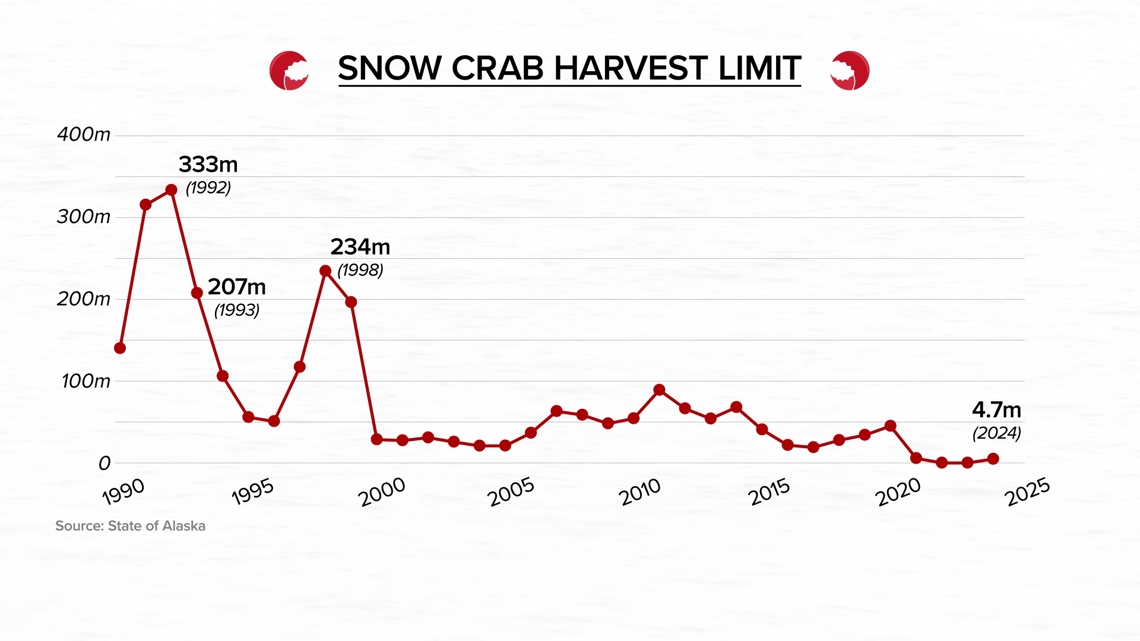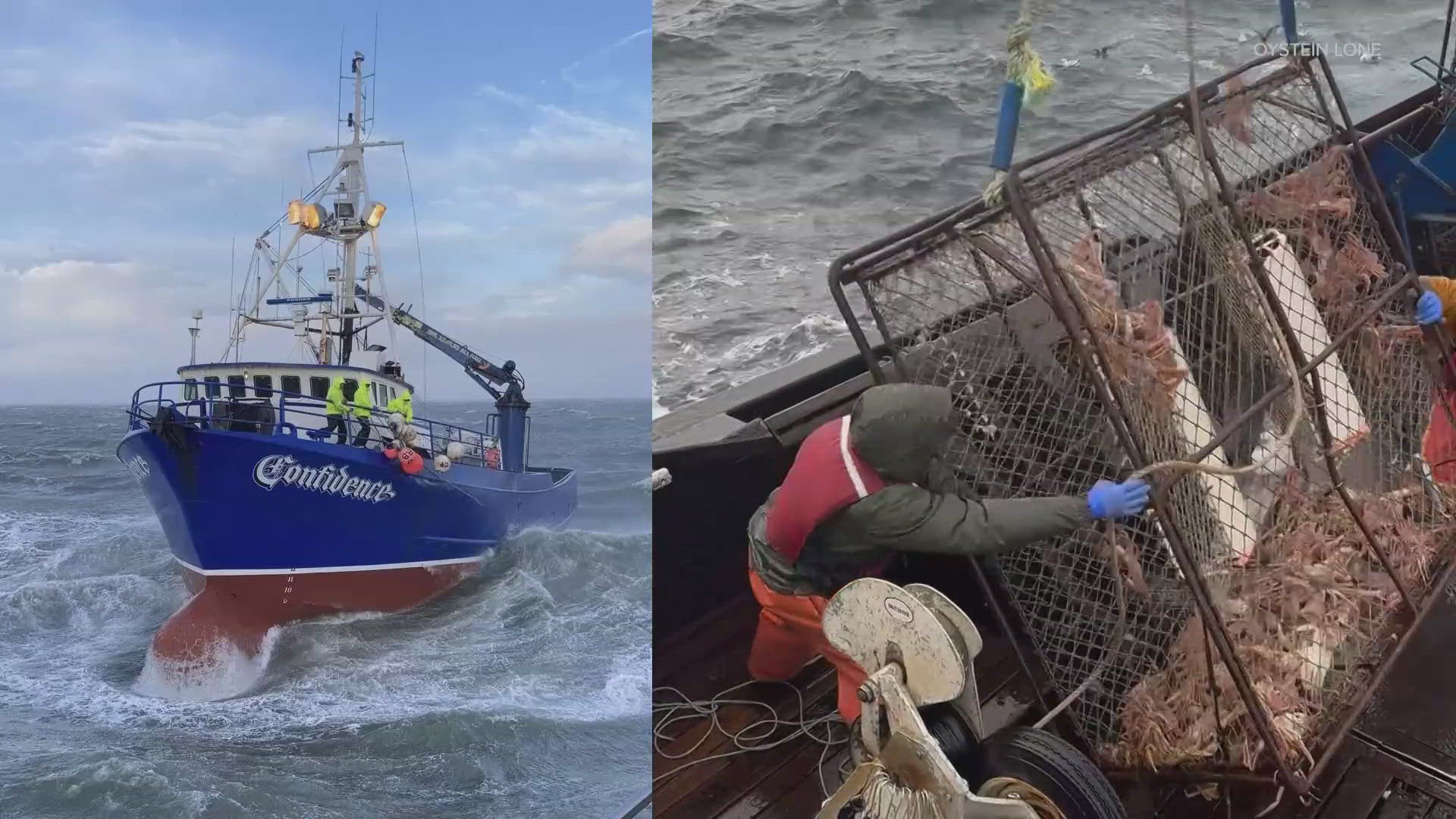ALASKA, USA — Crabbers are back in the Bering Sea Tuesday for the first day of the crabbing season, many of whom are from Washington.
This is the first time in three years they are allowed to catch snow crab. However, just because the season is open does not mean it's back to normal.
The opening comes after the crabbing season was canceled two years in a row in 2022 and 2023. The closures were caused by a swift decline in the Bering Sea snow crab population, which the National Oceanic and Atmospheric Administration (NOAA) scientists have since attributed to warm water. In 2021, billions of crabs seemingly vanished.
NOAA scientists have monitored the juvenile crab since then and are optimistic that those baby crabs will grow to a catchable size, but it takes years for that to happen.
In the meantime, the economic impacts have been felt industry-wide.
"When I was 12 years old, I knew I was going to be a fisherman," Oystein Lone said.
He is proud of his more than 40 years of crabbing, but in the last three years, he has witnessed the near collapse of the crab fisheries.
"Not having a season was devastating, to say the least. I think I speak for the whole fleet when I say that," Lone said, referencing the ships that crab in the Bering Sea, which he estimates have been cut in half since the first closure.
The season closures have given time to help the population recover, so a limited season was allowed this year. Crabbers will be able to catch just shy of 5 million pounds of snow crab total, which Lone said will be better than nothing.
"The vessels are barely hanging on right now," Lone said. "These openings that we’re getting, these small openings, they’re really going to help get the fleet get on their feet."
Scientists set the total allowable catch based on how the population is doing each year.
Data from the State of Alaska shows the biggest season for snow crab was in 1992, when the limit was 333 million pounds. Other big years include 1993 when more than 207 million crabs were caught, and in 1998, when more than 234 million pounds were caught.
Even with a drop in the 2000s, seasons still hovered between about 25 and 70 million pounds per year. So, less than 5 million this year is nothing close to normal.


"It's dramatically changed. The processors have been struggling, the fishermen are struggling, and the communities are struggling. I think we’re all banding together to get through this," Lone said.
Lone hopes small years will get the season back to where it's been in the past, with a focus on protecting to the population.
"It’s going to make things stronger and hopefully, we can rebuild our fisheries here one step at a time," Lone said, adding that he hopes to get back a 100 million pound season eventually. "I think we’re seeing a light at the end of the tunnel where we could get back to those numbers. Maybe I’m too ambitious but that’s what I’m hoping for."

